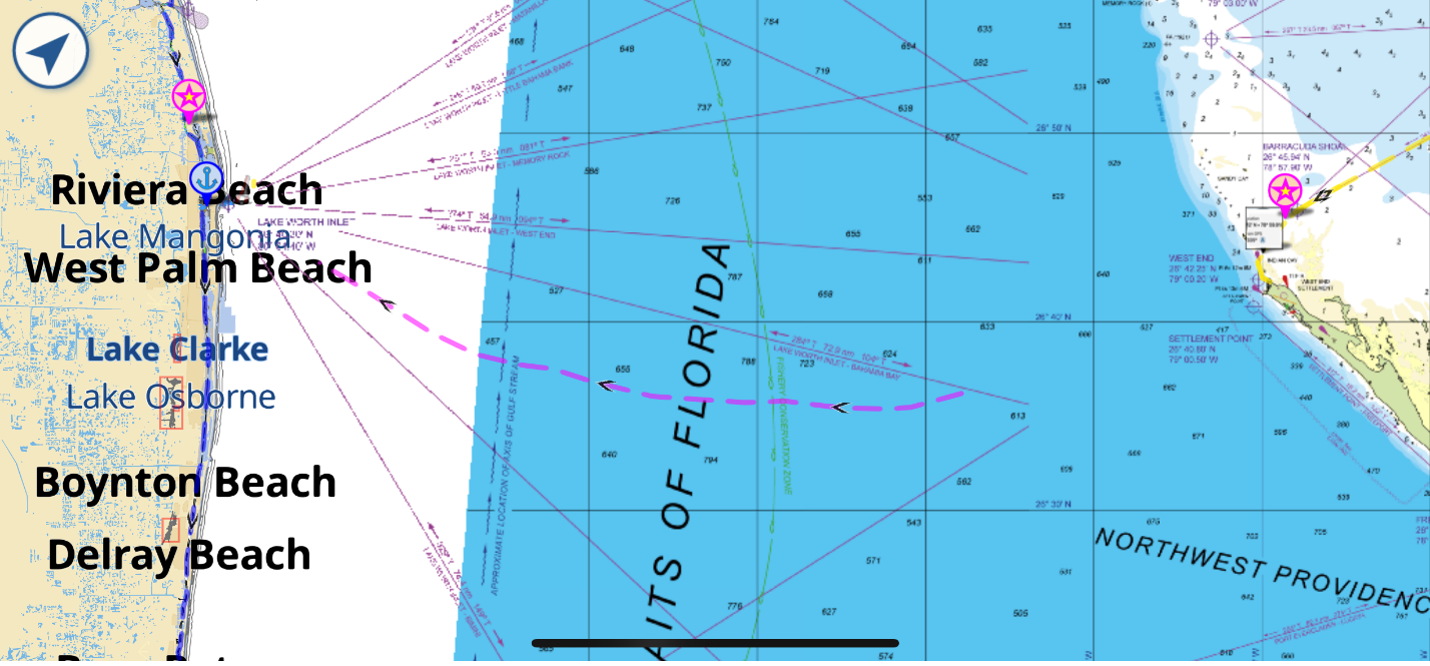We were wrapping up our 5-month winter 2021 / spring 2022 cruise from South Carolina to The Bahamas aboard s/v Little Wing, a Valiant 42CE. We had cruised The Abacos and Eleuthera and backtracked to Old Bahama Bay, West End, where we would stage for a crossing back to the US.
There were some isolated squalls by Mangrove Cay on the day of our arrival, Thursday April 14 but most of the bad weather according to The Bahamas Department of Meteorology was forecast to be further south of us.

The marina was quite full – more than I’ve seen before. It seemed like everyone had the same idea to wait at the marina for a good weather window to cross back to the US.

Next morning April 15, we were awakened at around 7:45AM by a loud thunderclap. It sounded very close. I scampered top side to see others out on the docks. Some folks on the adjacent docks said they saw lightning lighting up some of the masts on the sailboats on our dock. First things first, I checked the bilge – no water, good. I started to check our electrical components; AC systems were fine. But as I fired up our NMEA2000 network, I could see our Furuno chartplotter thought we were at position Lat =0, Long = 0 (off the west coast of Africa). My Maretron DC battery bank monitoring systems were not working. My Simrad Autopilot was not working. I thought I could better diagnose which components had failed by connecting my laptop to the N2K network using the Maretron USB -100 gateway – but ironically, the gateway was inoperative so I could not use that to diagnose what devices on our network were faulty. I decided to confirm that our trusty Westerbeke would fire up and thankfully it did (chalk one up for fully mechanical controls here).
I commiserated with other sailors around me. Some had physically lost their masthead instruments. One catamaran said their AC panel was smoking. Another said no Autopilot. Others said they had no damage.
Fortunately, having redundancy in GPS sources as well as the Aqua Map navigation app on no less than 4 iDevices on board gave us great comfort in making the crossing back to the US. Aqua Map Wi-Fi connected to our ship’s N2K network via the Vesper Vision2 AIS Transponder with 5Hz GPS had given us a separate set of navigation instruments.

The motor sail across was fairly smooth, taking one hour shifts hand steering. We arrived in West Palm Beach on a Saturday afternoon and were greeted by the boating madness of South Florida on the weekends. We made it!
Lesson Learned
Redundancy Is Good: We could have used simple Dead Reckoning to cross but knowing one’s position at all times is ideal. While our primary Maretron GPS200 was damaged, we had two more on our NMEA2000 network we could enable, in addition to a Garmin InReach device and 4 iDevices running Aqua Map. With our Master functions enabled, I was also able to monitor our Course Over Ground (COG) and ship traffic (AIS) on the iDevices as well.
Lightning is Unpredictable: Why did some sailboats get a direct hit on their mastheads and others not? We were lucky as all our masthead instruments were unaffected, but I suppose the great energy dissipated nearby caused some of our electronics damage. In the future when there are thunderstorms forecast we will be putting a few of our Aqua Map iDevices in the microwave as an additional safety measure.
Ted Arisaka, USCG LIcensed Master and Beta Tester for Aqua Map.
Ted started day sailing late in life, but after retirement has taken to cruising with his wife Patti and dog Nori aboard their sailboat sv Little Wing along the East Coast of The US and The Bahamas.




